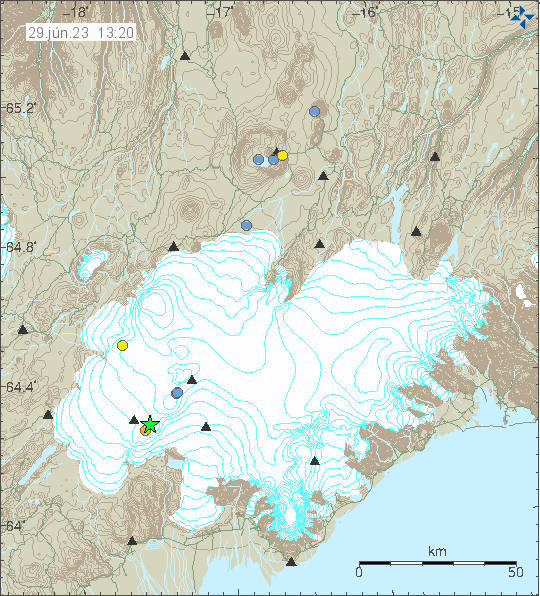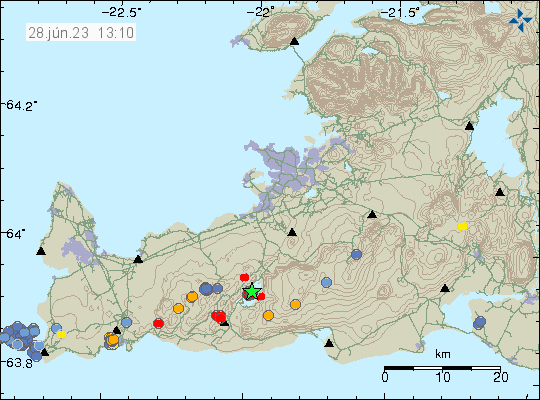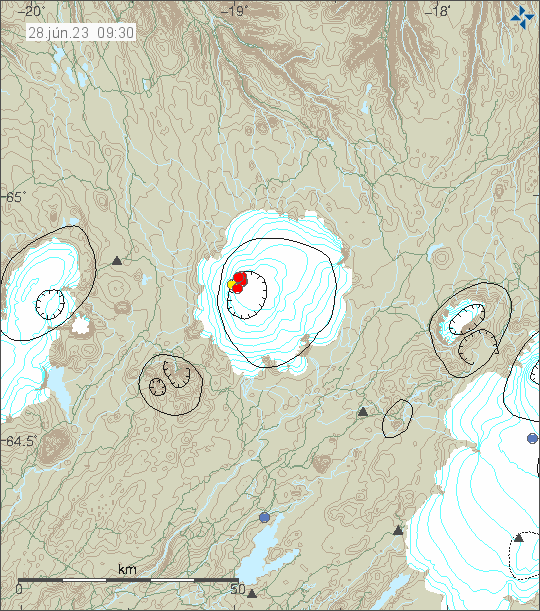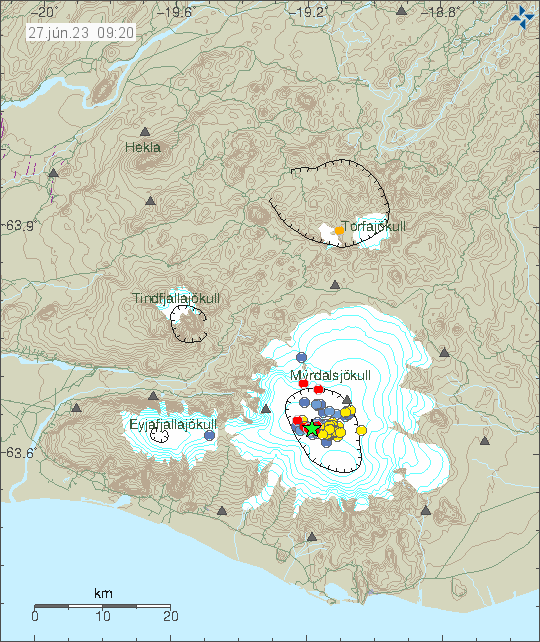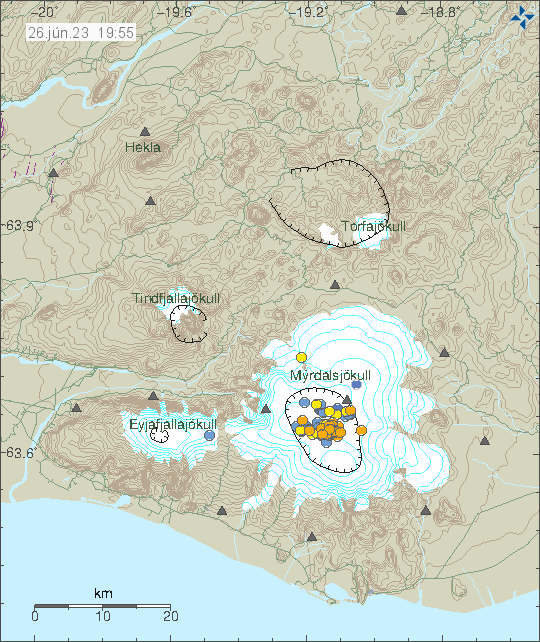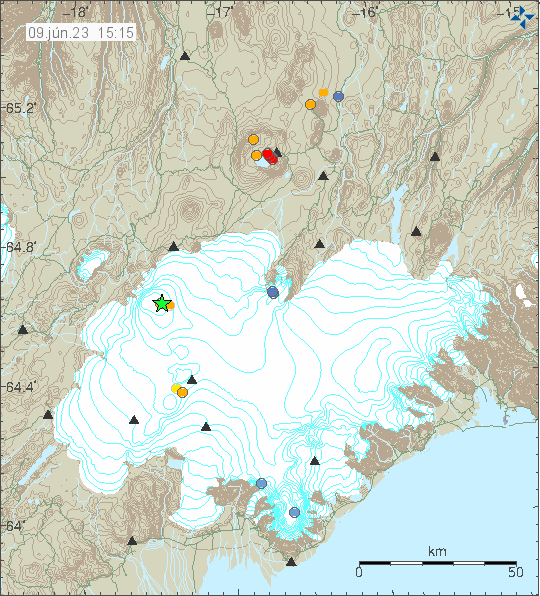During the night of 30. June 2023 an earthquake swarm started in Katla volcano. At the writing of this article the largest verified earthquake had a magnitude of Mw3,3.
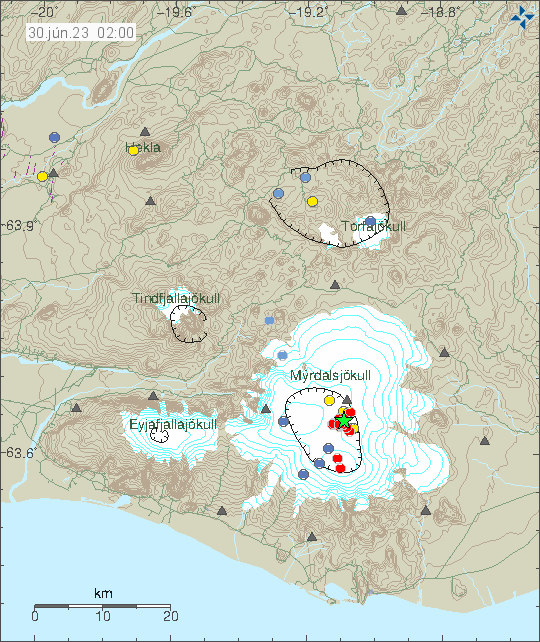
This earthquake swarm is ongoing at the writing of this article. Currently an eruption has not started, if that is going to change is something that just has to show it self in next few hours if this earthquake activity continues to increase. All that can be done for now is to monitor this situation.

